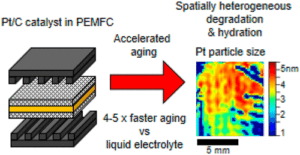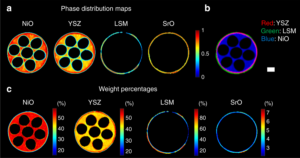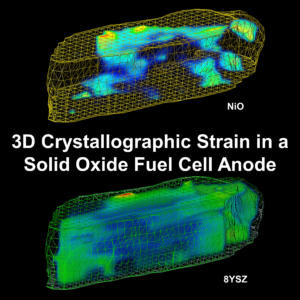Fuel Cells
Finden provides analytical insight for the development and improvement of battery and fuel cell technology. Below you will find some published work which demonstrates our capabilities featuring mixture of static and in situ measurements revealing process chemistry and deactivation pathways.
Further case studies include:
Techniques that can simultaneously probe all the components of functional devices at the nanoscale are urgently required to optimize the MEA architecture and operating conditions. Spectromicroscopy approaches using electron, neutron, and photon beams are powerful but generally laborious and/or limited to ex situ experiments. Significant advances in spatial and time resolution with in situ X-ray absorption tomography have been recently achieved. However, spatial resolution is often limited to scales greater than 100 nm and lacks the critical nanoscale and chemical information about the catalyst and supporting materials. This information is necessary to connect the catalyst activity, morphology, and stability to the overall MEA performance. These properties determine the device’s life cycle, with a major impact on its economic feasibility. Here we studied the catalyst degradation phenomena in an operating PEMFC using novel high-energy X-ray scattering techniques.
Ceramic fuel cells offer a clean and efficient means of producing electricity through a variety of fuels. However, miniaturization of cell dimensions for portable device application remains a challenge, as volumetric power densities generated by readily-available planar/tubular ceramic cells are limited. Here, we demonstrate a concept of ‘micro-monolithic’ ceramic cell design.
We look with at the chemical and crystallographic heterogeneities present in a Ni/NiO-YSZ solid oxide fuel cell electrode after re-oxidation. In this work, we correlate lab-based X-ray computed tomography using zone plate focusing optics, with X-ray synchrotron diffraction computed tomography to explore the crystal structure of a partially re-oxidized Ni/NiO-YSZ electrode. These state-of-the-art techniques expose several novel findings: non-isotropic YSZ lattice distributions; the presence of monoclinic zirconia around the oxidation boundary; and metallic strain complications in the presence of variable yttria content.



